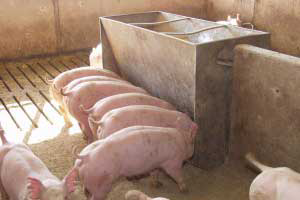Kemin: Lipid solutions for improved swine production

Oils and fats continue to be among the most critical ingredients used in feed. However, rising prices and varied sources have led to challenges among the industry.
To discuss lipid nutrition and its unique biosurfactant Lysoforte, Kemin, in cooperation with local distributors, hosted technical seminars for swine customers across Asia Pacific.
Spanning the course of two months, the seminars were held in Taiwan, Thailand, Vietnam and Korea and consisted of a panel of experts to discuss lipid consumption and its influencing parameters that can affect swine health and performance.
Dr. Hseih Hau Houng, professor from Pintung University in Taiwan, explained that like many raw materials, there is no homogeneity when it comes to oil and fat sources, and the varied nutritive values of lipids can greatly influence animal production. He further emphasised that an animal’s ability to properly digest and utilise fat sources affects profitability. In addition, Dr. Hseih Hau Houng shared his extensive research on Lysoforte, which validated the product’s ability to improve fat digestibility in broilers and thus help increase profits.
Also speaking at the seminars, Dr. Yoo Yong Kim, professor at Seoul National University in Korea, highlighted many practical tips for improving sow productivity and reducing feed costs for grower pigs. He recommended maintaining healthy sows by controlling body weight and body fat rather than body condition. Based on expertise and experience from managing his own swine farm, Dr. Yoo Yong Kim suggested following a batch system and grouping sows together by age. An all-in, all-out production strategy, in which animals are moved to and from facilities in distinct groups, is designed to control the spread of disease by preventing the mingling of groups.
Furthermore, Dr. Yoo Yong Kim advised on using alternative raw materials like palm kernel meal and coconut meal in pig diets to manage escalating feed costs. He also shared his latest research papers, which confirmed that exogenous bio-emulsifiers can help manage feed costs through its high energy sparing effect. His results showed that bio-emulsifiers can contribute up to 100 kcal of ME/kg and save more than 10 percent of total feed cost.
Further emphasising the importance of oils and fats for improved production, Kemin shared its research on Lysoforte, a biosurfactant that can help to enhance feed digestibility, improve growth performance and boost profitability.
“Research findings by Kemin scientists show that Lysoforte can spare dietary fat up to 1% in swine diets and save more than 10% of feed costs,” said Dr. C. Sugumar, Kemin product manager. “Lysoforte improves overall fat digestibility and boosts the digestibility of saturated and unsaturated fatty acids, thereby lowering fat excretion in feces to improve fecal structure. By reducing fat, the energy value in feed can be reduced by 60 kcal/kg in pigs without affecting weight gain and feed conversion ratios.”
According to Dr. Sugumar, poor fat digestibility is a common problem in young piglets. In a 30-day commercial trial administered by Kemin in piglets, the inclusion of Lysoforte at 500 grams/ton improved average daily gains at a rate of 583 grams/day vs. 564 grams/day for the control group. In addition, feed conversion ratios improved to 1.83 compared to 1.94 in the control group even though net energy was reduced by 43 kcal/kg from the standard diet. In this study, Lysoforte helped farmers lower feed cost by up to $3.4/ton.
In addition, Dr. Sugumar stated that Lysoforte increases emulsification, promotes more and smaller micelle formation and increases intestinal membrane permeability, which is essential for fat absorption. Improved fat absorption means less fat needs to be included in animal diets, ultimately helping formulators choose less expensive fat sources without negatively affecting growth performance.











